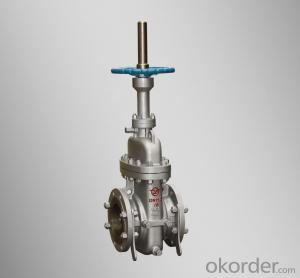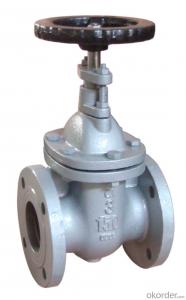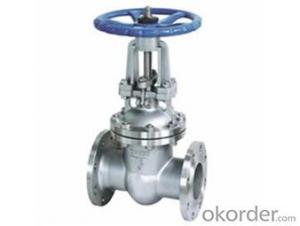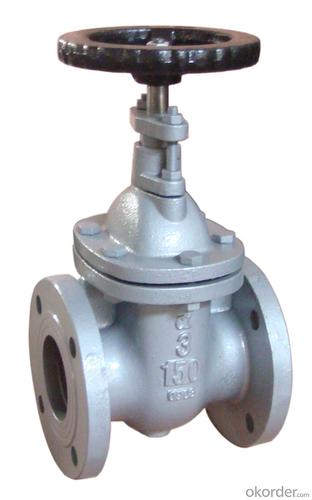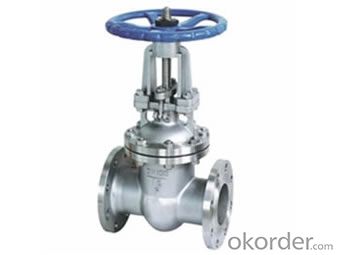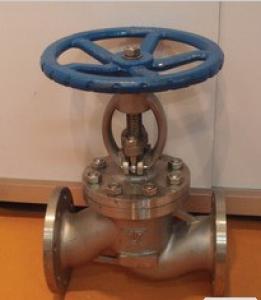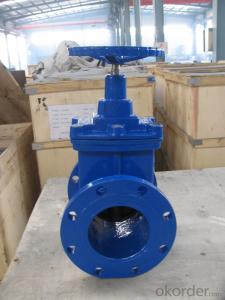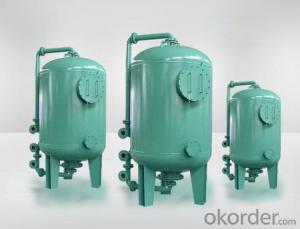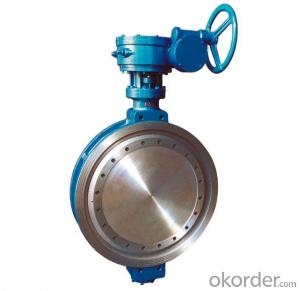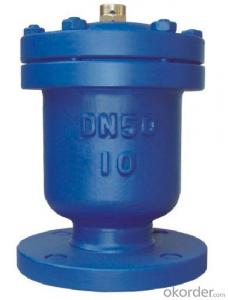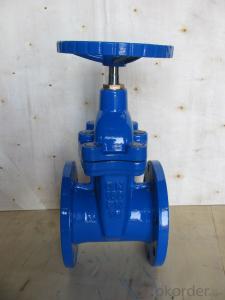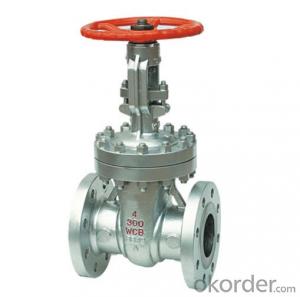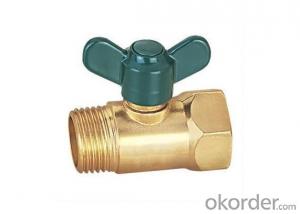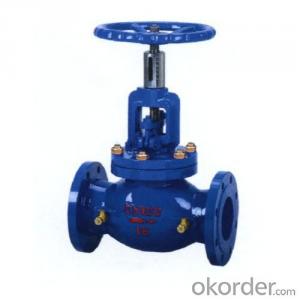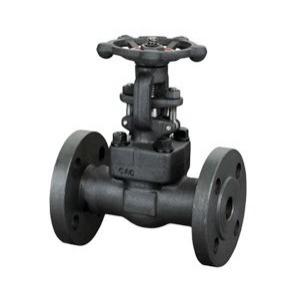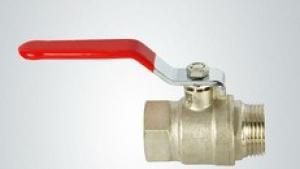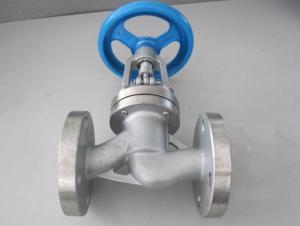Gate Valve on Sale DIN3352 Made in China of Largest Valve Manufacturer
- Loading Port:
- Tianjin
- Payment Terms:
- TT OR LC
- Min Order Qty:
- 100 pc
- Supply Capability:
- 1000 pc/month
OKorder Service Pledge
OKorder Financial Service
You Might Also Like
1.Structure of Gate Valve Description:
A gate valve, also known as a sluice valve, is a valve that opens by lifting a round or rectangular gate/wedge out of the path of the fluid. The distinct feature of a gate valve is the sealing surfaces between the gate and seats are planar, so gate valves are often used when a straight-line flow of fluid and minimum restriction is desired. The gate faces can form a wedge shape or they can be parallel. Gate valves are primarily used to permit or prevent the flow of liquids, but typical gate valves shouldn't be used for regulating flow, unless they are specifically designed for that purpose. Because of their ability to cut through liquids, gate valves are often used in the petroleum industry. For extremely thick fluids, a specialty valve often known as a knife valve is used to cut through the liquid. On opening the gate valve, the flow path is enlarged in a highly nonlinear manner with respect to percent of opening. This means that flow rate does not change evenly with stem travel. Also, a partially open gate disk tends to vibrate from the fluid flow. Most of the flow change occurs near shutoff with a relatively high fluid velocity causing disk and seat wear and eventual leakage if used to regulate flow. Typical gate valves are designed to be fully opened or closed.When fully open, the typical gate valve has no obstruction in the flow path, resulting in very low friction loss.
2. Main Features of the Gate Valve:
• Valve body cavity using non-toxic epoxy resin,both inside and outside flashboard completely is coated with rubber
• Free of water pollution
• High manufacturing accuracy
• High strength
• Environmental protection and energy saving
• Good visual effect
3. Images
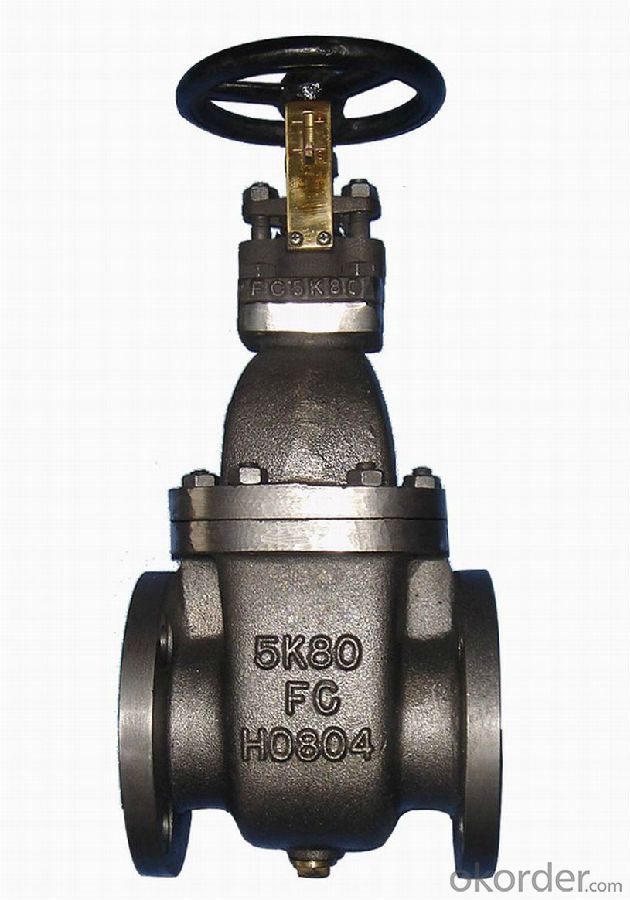
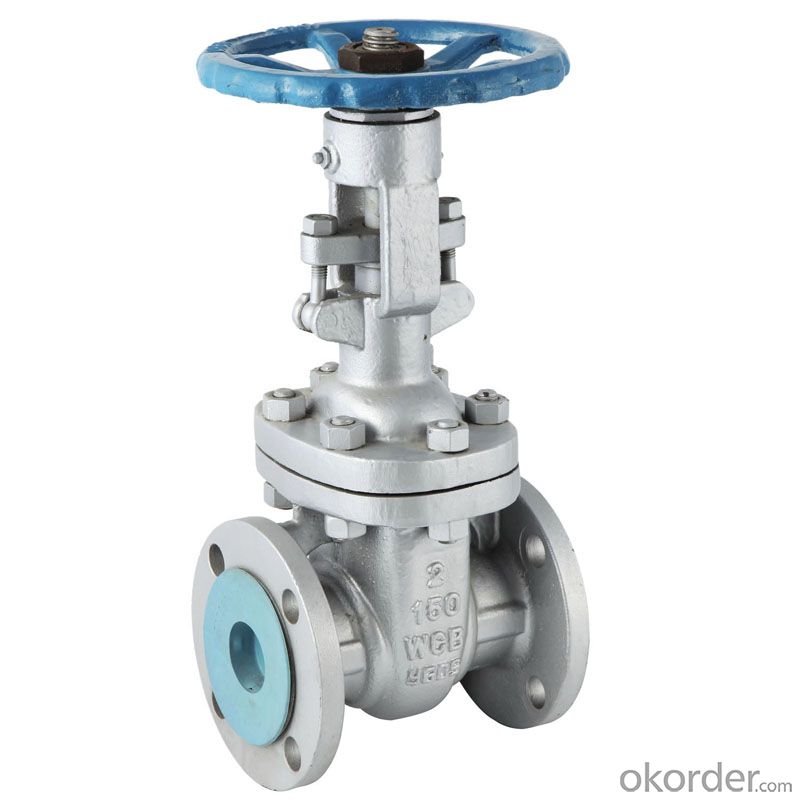
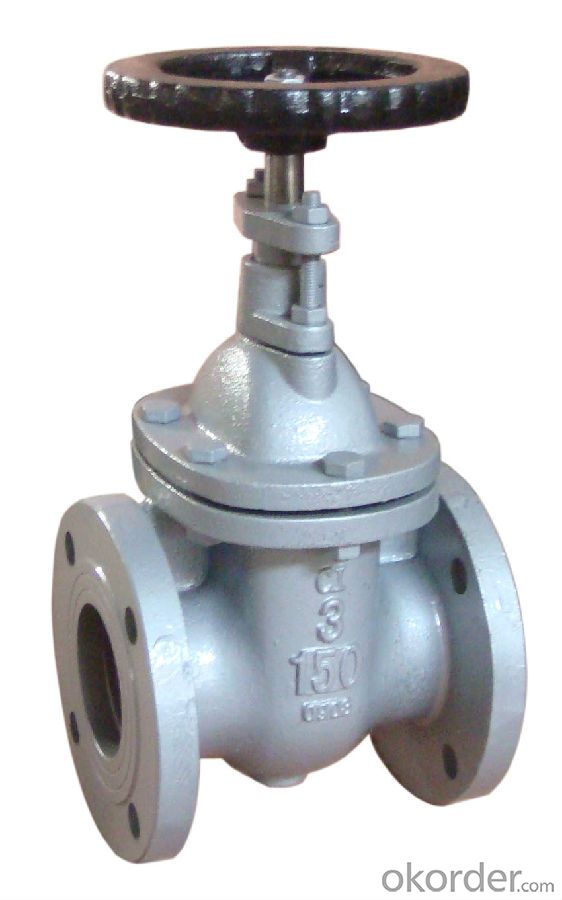
4.FAQ
1. What's are the characteristics of gate valve?
The distinct feature of a gate valve is the sealing surfaces between the gate and seats are planar, so gate valves are often used when a straight-line flow of fluid and minimum restriction is desired. The gate faces can form a wedge shape or they can be parallel.
2. What is the work principle of gate valve ?
The gate faces can form a wedge shape or they can be parallel. Gate valves are primarily used to permit or prevent the flow of liquids, but typical gate valves shouldn't be used for regulating flow, unless they are specifically designed for that purpose. Because of their ability to cut through liquids, gate valves are often used in the petroleum industry.
3. What is the structure?
Bonnets provide leakproof closure for the valve body. Gate valves may have a screw-in, union, or bolted bonnet. Screw-in bonnet is the simplest, offering a durable, pressure-tight seal. Union bonnet is suitable for applications requiring frequent inspection and cleaning. It also gives the body added strength. Bolted bonnet is used for larger valves and higher pressure applications.
- Q: What valve should be used to test the water valve?
- 1, ball valve.2, the water test valve can be ball valve, gate valve, stop valve, installed in the fire sprinkler system at each level of the end of the pipe.
- Q: What does the "PN" mark on the valve mean?
- The valve will usually be marked with "DN.PN." these two signs,DN refers to the valve path, and PN refers to the pressure levelFor example: DN25, PN16Refers to the valve diameter of 25mm valve, the pressure is 16 kg (1.6Mpa)
- Q: What is the difference between the valve before the pump and the valve after the pump?
- Pump front valve: current limit; pump rear valve: limit pressure.Pump operating procedures: the pump must be closed before and after the valve, open the pump, slowly open the pump front valve, pump pressure normal, slowly open the pump, valve until all open. If the pump is in front and rear valves are opened, the pump is very easy to burn the motor.
- Q: What valve is the FCV?
- FCV, control valve - you can adjust the valve opening according to the required flow
- Q: What does 1/2 mean in valve specification?
- 1/2 is American Standard, said 1/2. Equivalent to GB DN15, nominal diameter 15mm, indicating that the diameter of the pipe is 15mm. In the plumbing industry, it's called 4 points.Valve specifications in common use:Say: American Standard - GB4 points - 1/2 - DN156 points - 3/4 - DN201 inches - 1 - DN251 inches 2 - 1 and 1/4 - DN321 and a half - 1 and 1/2 - DN402 inches - 2 - DN50
- Q: What's the caliber of the valve 1/4?
- 1 inches is equal to 25.4mm, 1/4 how big, count it yourself.
- Q: What do you mean by the 16 bit coding of the valve type?
- Not regular encoding. Regular encoding is usually 11 bit and sometimes 13-14 bit
- Q: How much is the 150LB of the valve?
- 150Lb=2.0MPa=20 kg.Valve (Famen) is a control component in the fluid delivery system. It has the functions of closing, adjusting, guiding, preventing reverse flow, stabilizing voltage, shunting or overflow and releasing pressure.Valves used in fluid control systems, from the simplest stop valve to a very complex automatic control system used in a variety of valves, a wide range of varieties and specifications.
- Q: What are the general types of valves?
- Pneumatic and hydraulic valvesPneumatic valve and hydraulic pressure based on a certain air, water or oil as the power source, using the cylinder (or cylinder) and the movement of the piston to drive the valve, the general pneumatic air pressure is less than 0.8MPa, the hydraulic or hydraulic pressure is 2.5MPa~25MPa. Such as used to drive diaphragm valves; rotary gas and liquid drives are used to drive ball valves, butterfly valves, or plug valves. The driving force of the hydraulic device is large, and it is suitable for driving large diameter valves. If used for driving plug valves, ball valves and butterfly valves, the reciprocating motion of the piston must be turned into a rotary motion. In addition to the cylinder or hydraulic cylinder piston to drive, but also the use of pneumatic film driven, because of its small stroke and driving force, it is mainly used for regulating valves.Manual valveThe manual valve is the most basic way of driving the valve. The utility model comprises a hand wheel, a handle or a plate hand, and is driven directly and driven by a transmission mechanism two kinds. When the starting torque of the valve is large, it can be driven by gear or worm gear to achieve the purpose of omitting. Gear drive, spur gear drive and bevel gear drive. Gear reduction ratio is small, suitable for gate valve and stop valve, worm gear drive is relatively slow, suitable for cock flashing, ball valve and butterfly valve
- Q: Is there any difference between the valve and the water valve?
- There is no difference between the low pressure lubricating oil pump, as long as the excuse right on the line, not to pressure, design pressure ball valve common does not exceed 3MP, the maximum pressure of only small gear pump vane pump is 2.5MP, the other piston pump, gear pump, the pressure is above 6.3MP. Certainly not. Unless using high pressure water pipe valve.
Send your message to us
Gate Valve on Sale DIN3352 Made in China of Largest Valve Manufacturer
- Loading Port:
- Tianjin
- Payment Terms:
- TT OR LC
- Min Order Qty:
- 100 pc
- Supply Capability:
- 1000 pc/month
OKorder Service Pledge
OKorder Financial Service
Similar products
Hot products
Hot Searches
Related keywords
